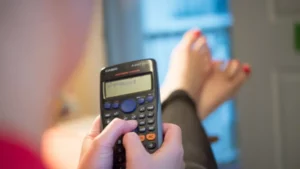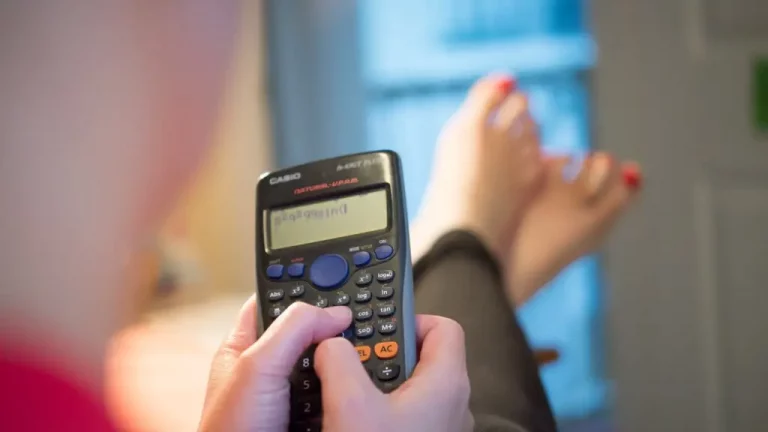How to teach GCSE mathematics at home
In this blog, Emma provides ten key points to help you successfully teach GCSE mathematics at home. It covers everything from researching the different exam boards to selecting resources and how to prepare for those all important examinations at the end of the course.
Teaching GCSE Mathematics at home will be a challenging experience. Here are ten ideas to help ensure that you prepare your son/daughter fully for the updated, rigorous GCSE examinations.
1. Decide which examination board you are going to use
In England you will need to choose between AQA, Edexcel, OCR and Eduqas. The content of their specifications is the same, but you will need to look through their sample assessment papers and past GCSE papers to help you decide which board will be most suitable for your son/daughter. If you undertake GCSE Mathematics with AQA, Edexcel or OCR, there will be three examinations to take at the end of the course, each one lasting one and a half hours. One paper is non-calculator. In the other two papers a calculator is allowed. With Eduqas, there are two examinations at the end of the course, each lasting two and a quarter hours. One paper is non-calculator, and in the other a calculator is allowed.
2. Familiarise yourself with the specification
Once you have chosen your examination board, you will need to download the specification from their website. The specification will contain a list of all the topics examined at both Foundation and Higher tier. It is a good idea to tick topics off as you teach them. This way you won’t have any horrible surprises at the end of the course! Most of the exam boards also provide topic tests and assessments that you can fit into your teaching at suitable points.
3. Choose the appropriate tier for your child
You will need to decide which level of GCSE to work at, whether it be Foundation or Higher tier. The Foundation tier covers grades 1 to 5, and the Higher tier covers grades 4 to 9. Grade 4 is equivalent to an old grade C and a grade 5 is equivalent to a high grade C/low grade B. Grade 7 is equivalent to an old grade A. Grades 8 and 9 are equivalent to an old grade A*, with only the top 3% of the student population being awarded a grade 9. The Higher tier syllabus is very challenging, and only students predicted a grade 6 or higher should really attempt it. The reason for this is that 50% of the Higher tier paper is aimed at grades 7, 8 and 9, so only half the paper is accessible for students working below this level. Confidence is the most important thing when deciding which tier will be most suitable. Often it can be a good idea to start off following the Higher tier syllabus, and if it proves to be too challenging, then move down to the Foundation tier as appropriate.
4. Gather resources
Decide on what resources you are going to use to teach the GCSE course. It is a good idea to have two or three different GCSE textbooks. For each topic, you can then look up examples in the different books. Some books may explain it in a different way, which will help your son/daughter to understand it better. You can also refer to websites like GCSE Bitesize. The MathsWatch revision CD is also an excellent resource. It contains hundreds of clips covering every topic on the GCSE syllabus. Each clip only lasts approximately three to five minutes, but it includes teacher examples, practice questions and exam style questions. The CD can be used to introduce topics, to consolidate learning or for revision purposes.
5. Make a study plan
Once you have decided on your resources, you need to come up with a study plan. In school students would typically have four one-hour lessons per week for their GCSE studies over a two-year period. On top of this, time needs to be built in for regular assessment and then revision at the end of the course. Work out how many hours you will need in total to cover all of the topics in the syllabus and then divide this up by the amount of time you have available. The exam boards often provide what is called a ‘scheme of work’, which is a plan of how to work through the GCSE course over a two or three year period. This will tell you the best order in which to work through the topics and roughly how long to spend on each topic. Alternatively, simply work through your textbook in order.
6. Practise
When working through the textbook, ensure that your son/daughter gets plenty of practice. They won’t need to complete every question in each exercise, but they should aim to complete some easy, medium and harder questions. They should also spend plenty of time working on the word problems to check that they can apply their skills in more complex situations. It is a good idea to mark their work every question or two so that errors can be picked up quickly and learnt from.
7. Assess strengths and weaknesses
Most textbooks have a review section at the end of every chapter or two. It is essential to complete these so that you can assess what your son/daughter does or does not know. In GCSE mathematics, understanding is the most important thing. Do not move onto the next chapter if there are gaps in their knowledge. They will be more successful overall if you address any weaknesses straight away.
8. Teach the exam technique
Most marks in the GCSE examination are awarded for the working out rather than the final answer. Ensure that your son/daughter shows all of the steps required in a calculation in order to arrive at a solution. Discourage them from doing all of the steps in their head, even for easier questions, as they are likely to earn no marks for doing this. The textbook examples will give you an idea of how much working is required for a question. Ensure that their written methods are neat, clear and easy to follow. If you can’t make sense of what they have written, ask them to explain how they worked through the calculation.
9. Use past papers
Become familiar with the types of questions asked on sample papers and past papers. It is a good idea to include past exam questions in your lessons so that they become used to the depth and style of what is asked. It will also show you how many marks are awarded for each question, and this in turn gives you an idea of how much working is required. For example a one mark question is likely to need only one line of working. Two mark questions will require at least two lines of working, and three mark questions will require at least three lines of working.
10. Complete mock exams
Check with the exam board details for entering your son/daughter for their GCSE examinations. For examinations in May/June, schools start making their entries in February. In the final two months of study, it is essential to complete as many past papers as possible. This will help your son/daughter to become familiar with the types of question that are asked, and it will highlight any gaps in their knowledge and focus where their revision should be. These should be completed under timed conditions so that they can get an idea of how long to spend on each question. It’s also a good strategy to complete the questions you have a good idea on first. Come back to the questions you’re not so sure of later on. Mark the question papers together from the mark schemes. Students learn so much from seeing how marks are awarded for each question. It often helps those reluctant to show their working out to see what they need to do in order to earn those valuable method marks.



Start the discussion!